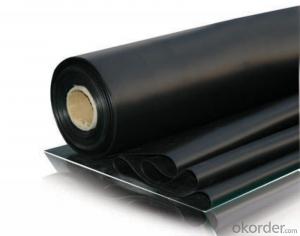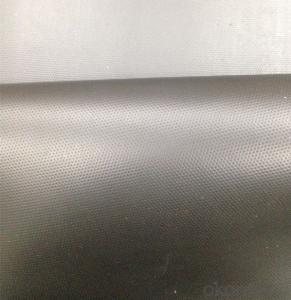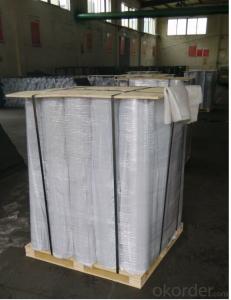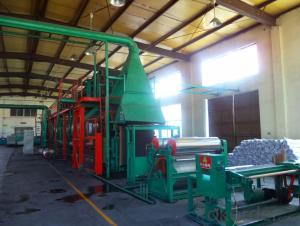Black EPDM Pond Liner Waterproof Membrane
- Loading Port:
- Qingdao
- Payment Terms:
- TT OR LC
- Min Order Qty:
- 3000 m²
- Supply Capability:
- 200000 m²/month
OKorder Service Pledge
OKorder Financial Service
You Might Also Like
EPDM Rubber Waterproof Membrane
Product Instruction:
EPDM waterproof membrane is made from ternary ethylene-propylene rubber,which is designed for waterproofing of exposed and non-exposed applications. EPDM waterproof membrane is of high elasticity among high polymer waterproof materials and becomes a world-popular waterproofing material.
CNBM own the wold-advanced equipment of cold feeding extrusion and continuous vulcanization technology. With the best performance among high polymer waterproof materials, EPDM is of exceptional elasticity and will not split or cracked under normal building movement.
Product Features:
-Excellent weather-ability, durability and size stability
-Good adaptability to high and low temperature, UV resistant and anti-corrosion
-High tensile strength and good elongation, accommodating to structure movement
-Easy installation, solid joint, and mo environmental pollution
-Good rooting penetration resistance
-Service life up to 50 years
Applications:
-Roof, basement, tunnel, pond liner, dam
-Industrial and civil building waterproofing
-Geosynthetic liner for fish ponds, swimming pools, channels, irrigation system
-Especially suitable for projects with high requirement in durability, anti-corrosion and deformation
Specifications:
-Width of roll: 1.2m, 2m, 4m
-Length of roll: 20m, 30m or customized
-Thickness of membrane: 1.2mm, 1.5mm, 2mm
-Type: vulcanized EPDM or welding EPDM
-Application: roof, basement, pond, lake, swimming pool, steel structure roofing, underground, tunnel, etc
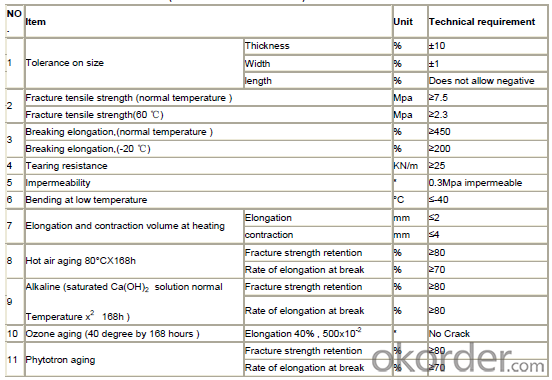
FAQ:
1. Is your EPDM waterproof membrane the real rubber?
Yes, our EPDM membrane is made from top quality rubber, which is imported from America. We support samples for testing, or testing in our factory.
2. How's your products quality?
Our EPDM is with the top quality at home and abroad. Our quality is much higher than Chinese standard. Our product is widely used in Chinese Central government projects. And it's also accpted by customers all over the world, such as EU, USA, Astrulia, etc.
3. What's the service life of your EPDM membrane?
The service life of our EPDM membrane is more than 50 years.
4.What's your MOQ?
Our MOQ is 3000M2.
5. What's your product ability of EPDM membrane?
We own the largest EPDM production line in China. Our product ability of EPDM membrane reaches 2 million square meter per year.
Photos:
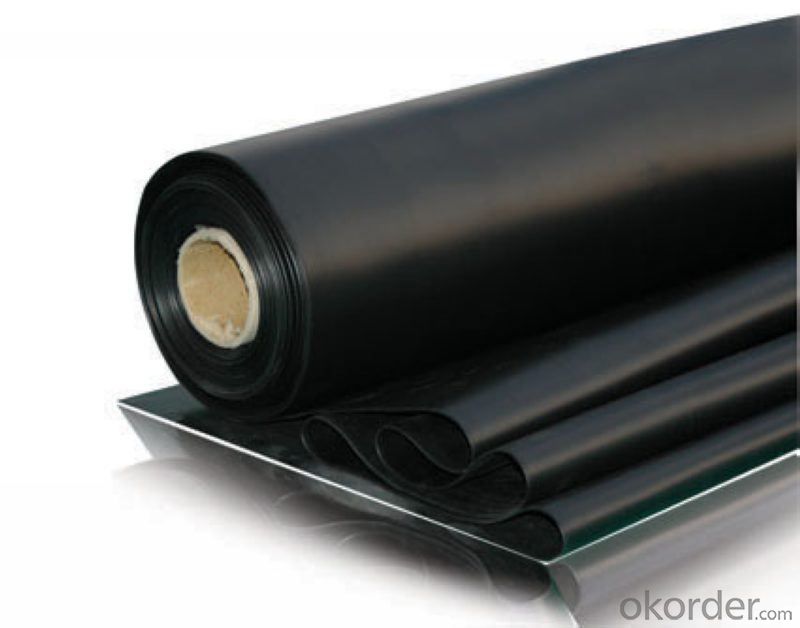
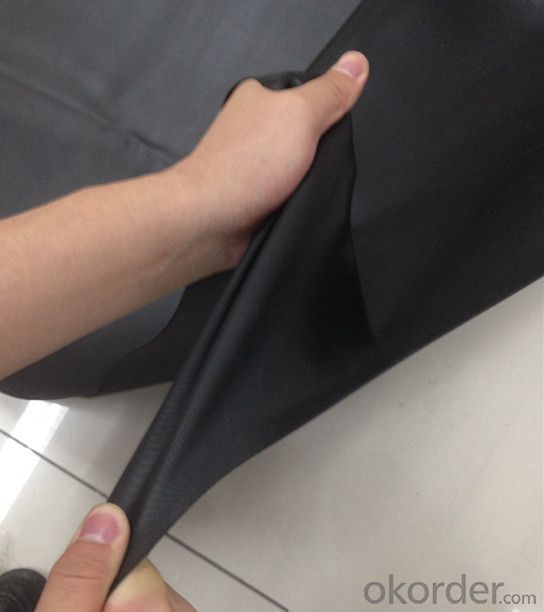


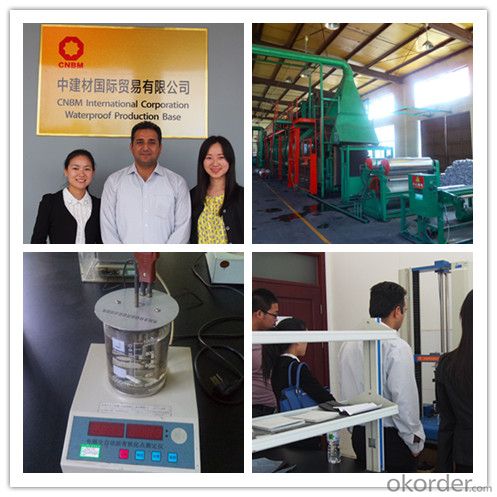
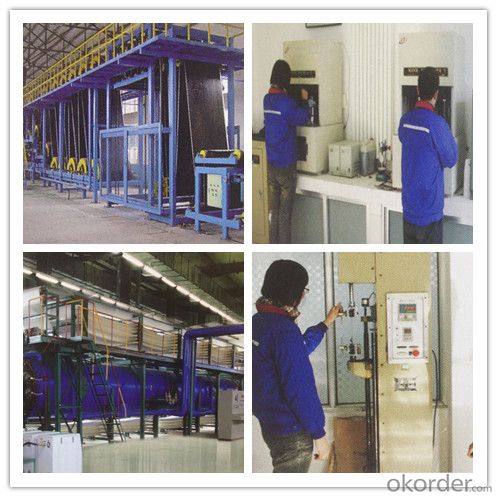

- Q:Are waterproofing membranes resistant to oil and fuel spills?
- Yes, waterproofing membranes are designed to be resistant to oil and fuel spills. They are specially formulated to provide a barrier against these substances, preventing them from penetrating the membrane and causing damage.
- Q:Can a waterproofing membrane be used in hot climates?
- Yes, a waterproofing membrane can be used in hot climates. In fact, it is essential to use a waterproofing membrane in areas with high temperatures and intense sunlight. The membrane provides protection against water intrusion, which is crucial in preventing damage to structures such as roofs, balconies, or basements. Additionally, a high-quality waterproofing membrane is designed to withstand the effects of temperature fluctuations and UV radiation, ensuring its longevity and effectiveness even in hot climates. Therefore, using a waterproofing membrane is highly recommended in hot climates to ensure the durability and integrity of the structures it is applied to.
- Q:Can a waterproofing membrane be used in elevator pits or sump pits?
- Yes, a waterproofing membrane can be used in elevator pits or sump pits to prevent water infiltration and protect the structure from potential damage caused by moisture.
- Q:Can a waterproofing membrane be installed over existing coatings or sealants?
- Installing a waterproofing membrane over existing coatings or sealants is possible, but it depends on the condition of the surface. Before proceeding, it is crucial to ensure that the surface is clean, dry, and devoid of any loose or damaged material. Adequate surface preparation plays a vital role in ensuring proper adhesion of the new membrane and effective waterproofing. To avoid any potential problems or system failure, it is advisable to seek advice from a professional regarding the compatibility of the existing coatings or sealants with the waterproofing membrane.
- Q:Can a waterproofing membrane be used in new construction?
- A waterproofing membrane is capable of being utilized in new construction. In fact, it is frequently advised to incorporate a waterproofing membrane during the construction phase to furnish an extra layer of safeguard against water harm. Typically, waterproofing membranes are administered to the external foundation walls and basement floors to obstruct water infiltration and construct a barrier against moisture. This can effectively avert predicaments like leaks, mold, and structural damage in the long run. Furthermore, waterproofing membranes can also be employed in other areas of a new construction project, such as roofs, balconies, and bathrooms, to guarantee long-lasting waterproofing protection. On the whole, the utilization of a waterproofing membrane in new construction can contribute to the extension of the building's lifespan and instill peace of mind for its occupants.
- Q:Can a waterproofing membrane be used in areas with vehicular traffic?
- Yes, a waterproofing membrane can be used in areas with vehicular traffic. In fact, there are specific types of waterproofing membranes designed to withstand the weight and movement of vehicles. These membranes, known as vehicular membranes or traffic-bearing membranes, are usually made of more durable materials such as rubberized asphalt or modified bitumen. They are designed to provide a strong and flexible barrier against water and moisture while also being able to handle the heavy loads and constant traffic associated with vehicles. Vehicular membranes are commonly used in parking garages, bridges, and other areas where vehicles are present.
- Q:Can a waterproofing membrane be applied to concrete?
- Yes, a waterproofing membrane can be applied to concrete. In fact, it is a common and effective method used to protect concrete structures from water damage. The membrane is typically made of a flexible material, such as rubber or polymer, that is applied to the surface of the concrete. This creates a barrier that prevents water from penetrating the concrete and causing deterioration or structural damage. Waterproofing membranes can be applied to various types of concrete structures, including basements, foundations, roofs, and balconies. The application process typically involves cleaning and preparing the concrete surface, applying a primer if necessary, and then applying the membrane using a brush, roller, or spray. It is important to follow the manufacturer's instructions and ensure proper installation to achieve the desired level of waterproofing.
- Q:Does a waterproofing membrane prevent water damage to building materials?
- Yes, a waterproofing membrane is designed to prevent water damage to building materials. It acts as a barrier that prevents water from penetrating into the structure and causing damage. The membrane is typically applied to areas that are susceptible to water intrusion, such as roofs, basements, and foundations. By creating a waterproof seal, it effectively prevents water from seeping through and damaging the building materials. This helps to protect the integrity of the structure and can prevent issues such as mold growth, rotting, and deterioration of materials. However, it is important to note that the effectiveness of a waterproofing membrane can vary depending on the quality of the product and the proper installation. Regular maintenance and inspections are also necessary to ensure that the membrane remains intact and continues to provide protection against water damage.
- Q:Can a waterproofing membrane be applied on vertical surfaces?
- Yes, a waterproofing membrane can be applied on vertical surfaces. In fact, waterproofing membranes are often used on vertical surfaces such as exterior walls, retaining walls, and foundations to prevent water penetration and protect the underlying structure. These membranes are specifically designed to adhere to vertical surfaces and create a barrier against moisture. They are typically applied in multiple layers to ensure maximum waterproofing effectiveness. Additionally, there are various types of waterproofing membranes available, including liquid-applied, sheet-applied, and spray-applied membranes, which can be tailored to different vertical surfaces and construction requirements.
- Q:Can waterproofing membranes be used on concrete reservoirs?
- Yes, waterproofing membranes can be used on concrete reservoirs. These membranes provide a protective barrier against water infiltration, ensuring that the reservoir remains watertight and preventing any potential leaks or damage to the concrete structure. Waterproofing membranes are commonly used in construction to enhance the durability and longevity of concrete reservoirs.
1. Manufacturer Overview |
|
|---|---|
| Location | |
| Year Established | |
| Annual Output Value | |
| Main Markets | |
| Company Certifications | |
2. Manufacturer Certificates |
|
|---|---|
| a) Certification Name | |
| Range | |
| Reference | |
| Validity Period | |
3. Manufacturer Capability |
|
|---|---|
| a)Trade Capacity | |
| Nearest Port | |
| Export Percentage | |
| No.of Employees in Trade Department | |
| Language Spoken: | |
| b)Factory Information | |
| Factory Size: | |
| No. of Production Lines | |
| Contract Manufacturing | |
| Product Price Range | |
Send your message to us
Black EPDM Pond Liner Waterproof Membrane
- Loading Port:
- Qingdao
- Payment Terms:
- TT OR LC
- Min Order Qty:
- 3000 m²
- Supply Capability:
- 200000 m²/month
OKorder Service Pledge
OKorder Financial Service
Similar products
New products
Hot products
Hot Searches
Related keywords
